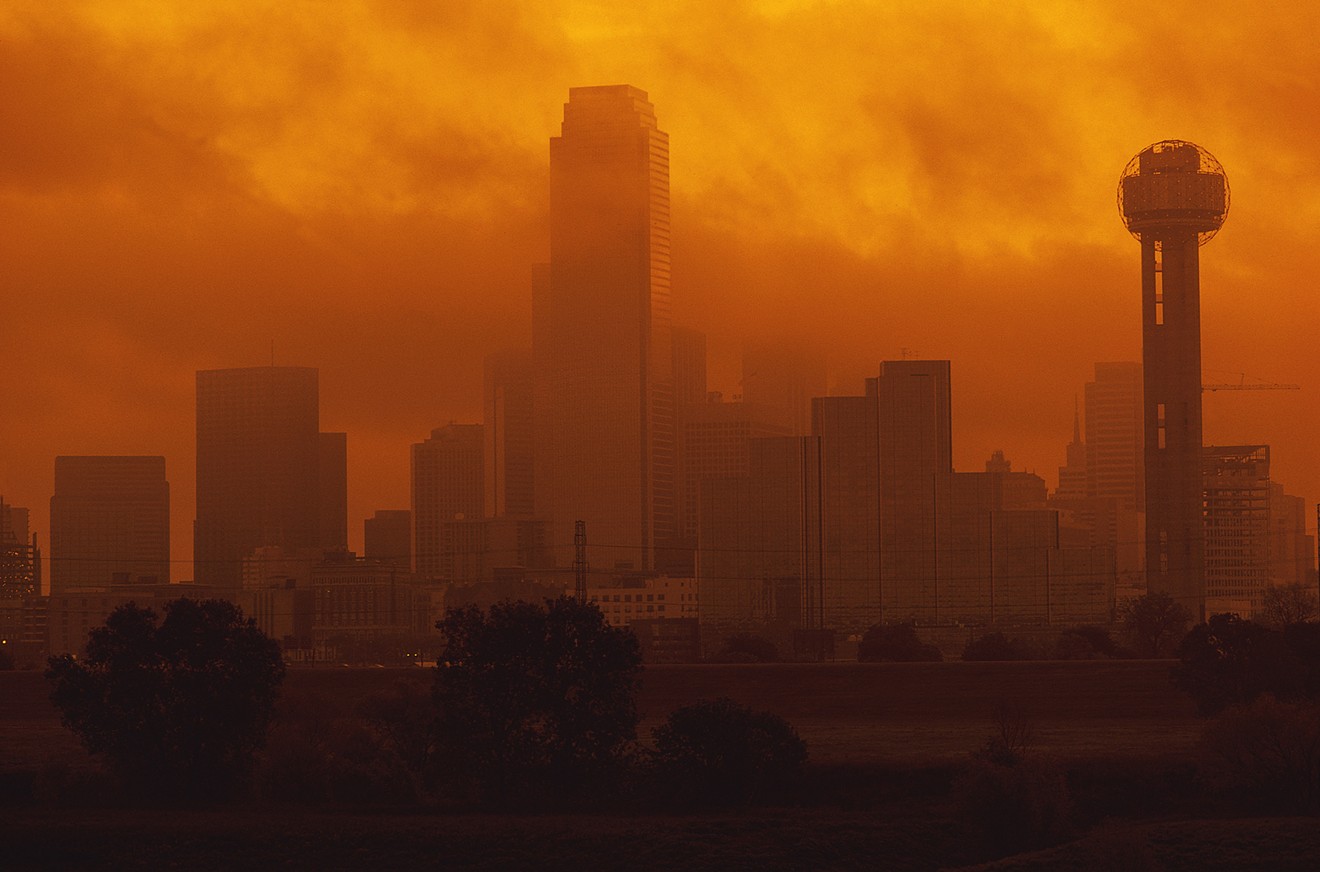But since an industrial recycling plant opened up next door at the beginning of last year, the clear stream and fresh air are a distant memory. Black dust covers mailboxes and cars, and the air smells like asphalt on a hot day, she said.
To prove to the city how bad the situation was, Jackson and local advocates measured the air quality for several days and found spikes in particulate matter when the hot winds blew. The city has since filed suit against the plant's owners.
Now, those advocates are expanding their effort and have formed a coalition of local universities and environmental groups to blanket the Dallas area in low-cost air pollution sensors.
The group plans to install over a hundred sensors in the Dallas area by early next year. The effort joins similar attempts by cities across the country to more finely track the severity and spread of the airborne particles that researchers have linked to serious health issues, particularly in underserved communities.
“It's like shining a light that helps us see what's going on so we can then make the obvious response,” said David Lary, the University of Texas at Dallas professor who leads the research group that is designing and manufacturing the air pollution monitors.
The project’s organizers have cobbled together over $100,000 in funding and have finalized a design for a low-cost device that is being manufactured at UTD.

University of Texas at Dallas students Adam Aker and Daniel Kiv hold up a prototype of the device.
Lucas Manfield
Dallas County Commissioner Theresa Daniels said the health impacts of dirty air worry constituents in her district from both sides of the aisle. She is now organizing a partnership between the universities, advocacy groups and local governments to govern the network. While acknowledging that more monitoring isn’t a solution, she says the data generated by the network will be a crucial tool in convincing policymakers to address emissions.
“At least we can be collecting the data to show that yes, there are issues,” she said. She pointed to research from Children’s Medical Center showing that Dallas County has the one of the worst rates of hospitalizations for childhood asthma in the region.
Dallas’ air quality issues will not be a surprise to state and federal regulators, who run seven monitoring sites in the area. Since the early 1990s, the county has failed to meet federal guidelines for ozone, a pollutant generated by car exhaust that has been linked to various health issues like lung disease and asthma. But organizers say that this larger network of air monitors will provide new insights.
Plano is using money from a Department of Energy grant to fund the installation of 44 of the devices across the city. Yarcus Lewis, who supervises sustainability projects for the city, said the data could be used to improve streetlight timings or convince businesses to alter shift schedules to keep traffic off the street at peak hours.“It's the same revolution that hit TVs and telephones and computers. Now we’re taking these air sensors and you're actually giving communities the power to monitor themselves.” — Jim Schermbeck
tweet this
“Depending on what the data tells us, we would design policy programs to address those associated impacts,” he said. “As we see the impacts maybe grow, we go from having one solution to a second solution to a third solution.”
Downwinders at Risk, a DFW environmental advocacy group, and Paul Quinn College are teaming up to install at least 40 devices around southern Dallas. They’re leveraging $20,000 in grant funding provided by Ben & Jerry’s and are in the late stages of winning a grant from the Environmental Protection Agency.
“It's the same revolution that hit TVs and telephones and computers. Now we’re taking these air sensors and you're actually giving communities the power to monitor themselves,” said Jim Schermbeck, an organizer with the advocacy group.
Beginning in November, his organization will be going door to door in the southern Dallas neighborhood Joppa, offering to install the monitors for free on roofs, fence posts and gutters. To make this all work, the solar-powered device must have a large enough battery to survive winter weeks without sun as well as a big enough antenna to send the data to a hub miles away.
The city of Dallas has supported several of the grant applications, but its director of the Office of Environmental Quality & Sustainability, James McGuire, expressed caution.
“My concern always is: when you're a city official, you're responsible for ensuring that you're getting good quality data,” he said.
But the city is working with the Nature Conservancy to install commercial air pollution monitors in local schools. Some of those sensors — which aren’t regulatory-grade but still cost around $5,000 — have had reliability issues, which he said highlights the risk of relying on cheaper equipment. Data from that project, organizers say, will be available later this year.
But Marsha Jackson is tired of waiting. For her, pollution is not an abstract problem. She can see it in the dust coating her gutters and feel it in her lungs.
She’s working with Downwinders at Risk to install some of the new monitors in her neighborhood, and she looks forward to showing the results to city officials.
Her doctor has told her that it will only get worse until she moves, but Jackson refuses to give up the fight.
“I want them to see how that stuff is just slowly killing us,” Jackson said.












